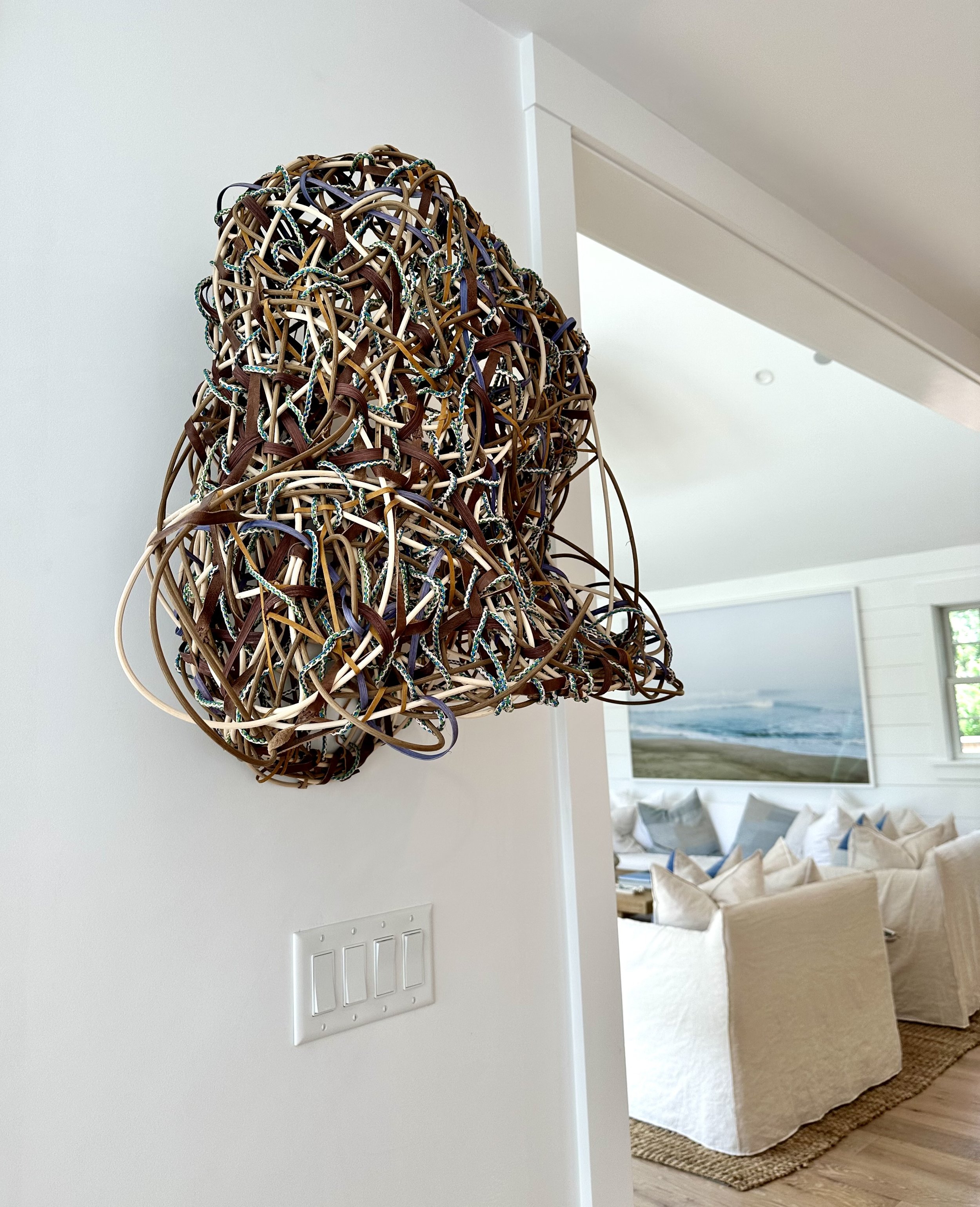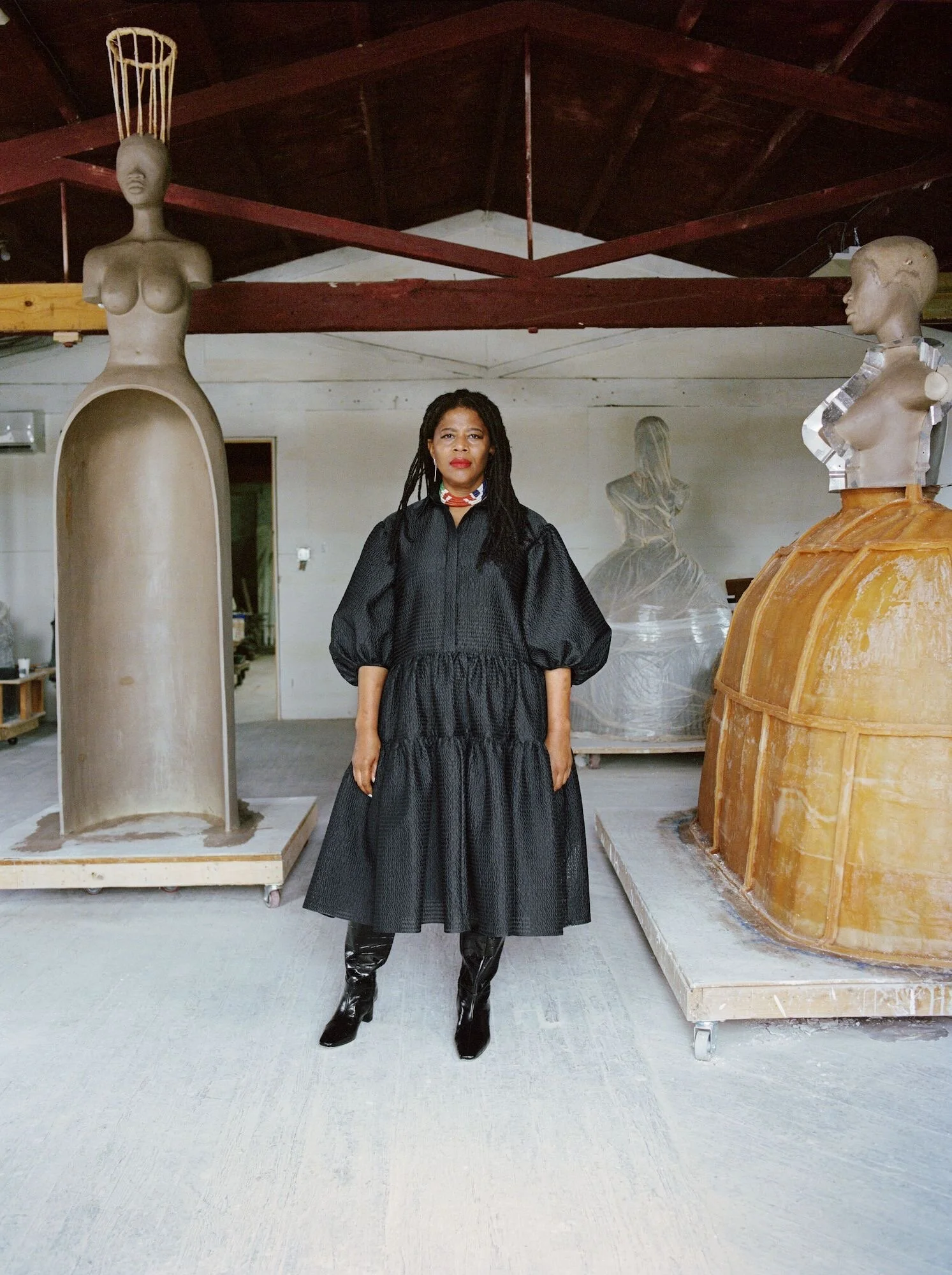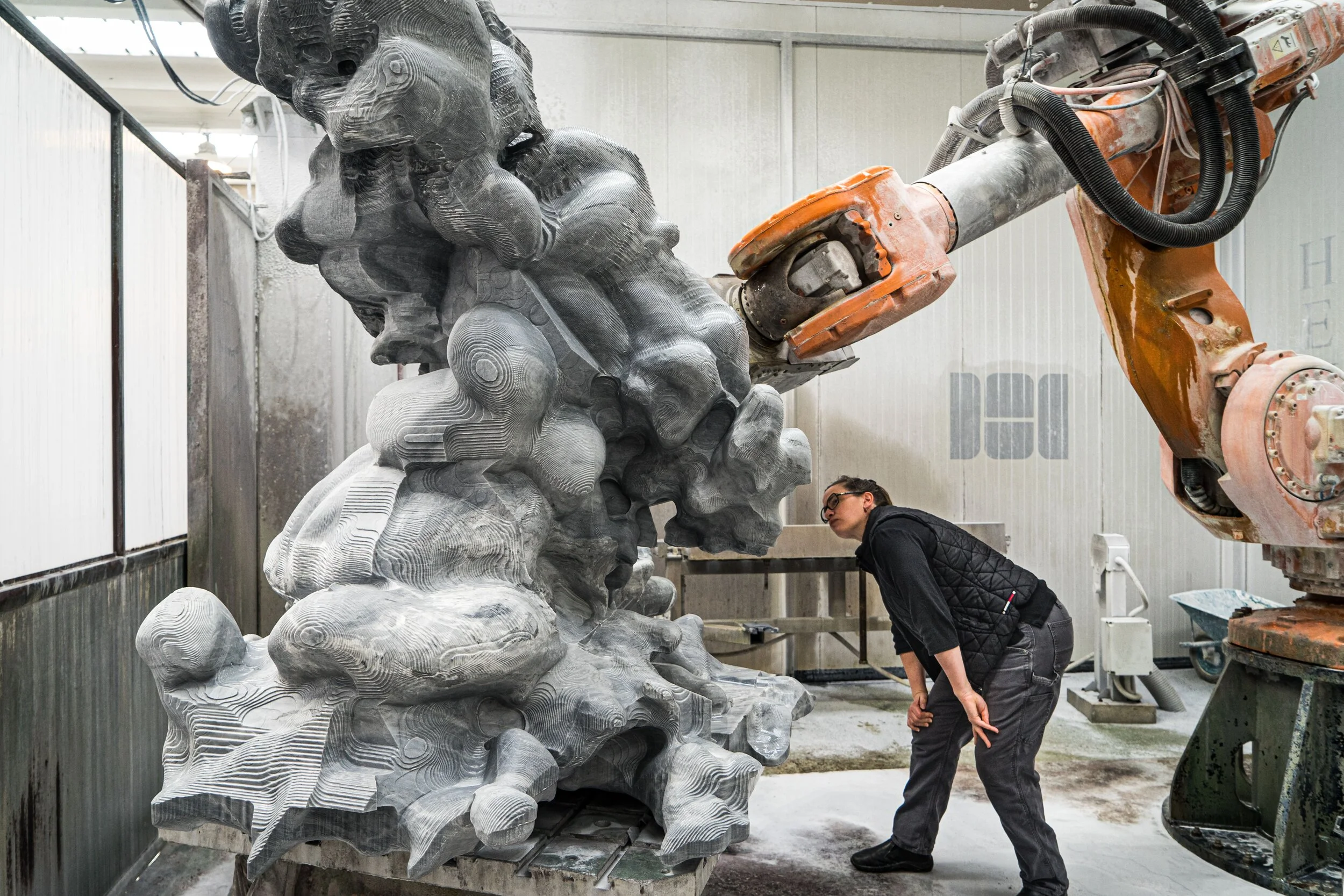Zainab Sumu | Inside Out
In her cheerful, unassuming studio in Somerville, MA, Zainab Sumu is fashioning a bridge to Africa. The artist/designer has been working on it for years, creating a multidisciplinary body of work that honors and reimagines various artistic traditions of West and North Africa with all the color, ingenuity and music the region inspires.
To experience Zainab Sumu’s work is to experience Africa through her unique worldview, one of immense respect for cultural inheritance and a sense of indebtedness to her family for teaching her the significance of local artifacts made by hand and the importance of traveling the world.
Binta, 2020, watercolor on paper. Painting of a welcoming Fulani woman encountered durning the artist’s travels.
“I am the first in my family to be an artist,” she explains. “However, my parents collected and supported locally made artisanal products. Our home was filled with furniture and art that was locally made. I remember Mama having an impressive collection of African textiles in a large trunk. She had a group of artisans who create a favorite local textile called Gara. It was a delight waking up most days to the thump, thump, thump that accompanied the beating of the textile with a wooden gong to give it its shine.”
A true citizen of the world, Zainab grew up in Freetown and Kono, Sierra Leone, Africa and Paris, France. She studied in London, opened a high-end fashion boutique in Los Angeles and ultimately moved to Boston to pursue a degree from Massachusetts College of Art and Design’s Fashion and Textiles Program. She now runs both her artistic practice and fashion line out of her studio in Somerville and travels extensively throughout Africa and Europe.
Melk I, 2022. Leather strips, smoked round reed, flat reed, natural round reed, antique Touareg leather cord, oversized sequins. 34 x 24 x 15”
To enter Studio Znabu is to be transported, to experience that aesthetic bridge between cultures, continents and time. On my first visit, I planned to stop in and then head to another event across town. Instead, I stayed for hours and cancelled my other event. Where else could I lose myself in clothing, paintings and sculpture made by the same artist? I was drawn to the organic materials, the unexpected patterning, the intricacies and openness of the weaving, the mesmerizing colors and shapes.
Sumu happily discussed her background, education and evolving practice with the chic, eclectic crowd. The raw beauty, vulnerability and authenticity of the work mesmerized and soothed me. In our increasingly digital world it felt good to be amongst objects prioritizing texture and touch. I knew I would be back.
Sumu’s oeuvre includes woven sculptures, paintings, fashion and textile design. Her metaphorical bridge also links the past with the present; Sumu builds on African craft tradition, pushing the mediums to provoke notions of a more interconnected future. That connection sparked the name of her fashion company, Primitive Modern.
A collection of scarves and wraps from Sumu’s fashion and home line, Primitive Modern.
“My work of art is me, my past, present and future self. Experiencing different cultures, losing my parents at a young age, making and losing friends, living life all inform my work in some way or another.”
Through working with her hands, Sumu coaxes what’s inside, out. Her process of weaving, twisting, plaiting, knotting, looping and sewing, often for extensive periods of time, allows for a therapeutic reckoning with her experiences, her dreams and her past. Working with her hands also connects the artist to a cadre of contemporary female artists pressuring the art world to recognize and elevate previously devalued “crafts” such as weaving, textile design and quilting (see Joana Vasconcelos, Erin M Riley, Aiko Tezuka, Sara Zapata, Tau Lewis and Bisa Butler to name a few).
The heart to hand connection is also foundational to Sumu’s drawing and painting practice. “Earlier this year, I started this practice of doing drawing exercises on paper. I remember one day I was feeling uninspired and decided to take a deep breath and just draw. An hour later I had created about forty sketches. I never really dealt with the trauma of losing Papa so suddenly. It left a void that I was unwilling to face. I am working on a series of large scale paintings inspired by the turmoil, sadness, love, fear, and the sense of peace that has come out of ultimate acceptance of my loss.”
These larger paintings, Intertwined I (72 x 60”) and Intertwined II (60 x 40”) pushed her into new territory not just in scale, but in intention and content. With these paintings, her internal state is the subject matter rather than external places, people, music, culture.
Intertwined II, 2023 (60 x 40”) in the Somerville studio. Watercolor, graphite crayon, oil stick, charcoal, pastel.
LE FORM BLEU 1, 2022. Strips of leather, round reed, flat reed, braided leather wrapped wire in situ.
Materiality is central to Sumu’s work. She collects assorted materials during her travels, and they cement a connection for her to that place. She chooses materials that are of nature - plant and animal. As she says, “I like tactile, soft and pliable materials with spiritual and cultural significance and that evoke a sense of nostalgia in me and hopefully in the people who come in contact with my work.”
For thousands of years (possibly as far back as 5,000 BC) weaving has been an integral part of African cultural production. Essential functional items like baskets, fishing nets, furniture, blankets and vessels are in many communities still woven by craftspeople, their skills inherited from prior generations.
Sumu’s woven sculptures consist of many ancient materials such as jute, reeds, grasses and hides mixed with contemporary ones like metallic wire and sequins. Every element has its significance and that significance gets woven into the story of the piece. Bric-a-brac purchased from a seller in Marrakech, calabash from time spent with Fulani women in Mali, leather from a local artisan in Fouta Djallon, Guinea. All facets of Sumu’s work add cultural meaning.
Behind the scenes at Studio Znabu.
“I am a creative, a maker. Everything I create comes from my heart. I make that which moves me. I feel that I am a vessel, the work comes through me and I am not in control of what form it takes.”
Inspired by travels throughout North and West Africa, Sumu’s painting series evoke the architecture, light, sounds, colors and music she experienced abroad. Her signature style of abstraction imbues the traditional subject matter with a contemporary edge.
Her Gnawa series was inspired by time spent in Morocco. Gnawa is an ancient musical practice still performed today in both rural and urban settings. According to UNESCO, Gnawa music was “originally practiced by groups and individuals from slavery and the slave trade dating back to at least the 16th century… Gnawa culture is now considered as part of Morocco’s multifaceted culture and identity.” Experiencing the music live made an enormous impression on the artist and she carried it home to Studio Znabu.
A sense of musicality characterizes much of Sumu’s work, but the Gnawa series is a direct example. The trancelike rhythms and repetitive sounds are captured in the interaction of fine, circular black lines and large, smooth colorful shapes in Jadba 2.2. Look closely at Melk and find the castenets known as qraqab or krakeb and a three-string lute known as a hajhuj or gimbri, as well as coffee beans.
In her Pulaaku series of watercolors (below) Sumu considers the life of the Fulani people. “This series of paintings was inspired by the landscape, way of life and pastoral chivalry of the Fulani people in Fouta Djallon, Guinea.” A sense of harmony runs through the series. In Wasaan Sudu a hut is surrounded by plant life, tall fronds of what could be sugar cane, and native rocks. In Wasaan Village livestock share space with earthenware, wooden ladders, a painted teapot and flowers. And in Wasaan Feiullage abstracted, colorful lifestock graze behind dense foliage. All are transformed by her unique style of abstracted line, color and shape.
Her Pulaaku series of woven sculptures is similarly inspired by time spent with the Fulani people. Raised by a proud and powerful mother and educated in the most sophisticated cities in the world, Sumu’s work reflects women’s spaces, women’s work and women’s impact. The calabash is a meaningful signifier throughout her work. Calabash trees produce large gourd like fruit which is traditionally used as containers or vessels. The artists writes, “In creating these vessels, I wanted to highlight the quiet power the female wields in the home whilst also elevating the status of the calabash as an artform.”
In addition to many private collections, Zainab’s work is in the permanent collection of The Quin House, Boston and the Beth Israel Deaconess Center, Boston. This winter she is scheduled to show at Galerie Christoph Person, in Paris, France. That first time I experienced Zainab’s work in Somerville, the crowd included curators, art advisors, artists and collectors. Her reputation is growing, motivating her to dream even bigger.
Aisha, 2023. Jute, reed, suede. 40 x 32”.
One of Zainab Sumu’s most enthusiastic fans is His Excellency Julius Maada Bio, Sierra Leone’s President. Bio believes Sumu sets an important example for the young people of the small West African nation. She has made art-making her career, her life, and has found enormous success. He wants more Sierra Leoneans to consider art as a serious career choice.
Sumu explains that art making and craftsmanship have traditionally been seen as the purview of the uneducated. Basket and textile making, furniture and clothing design were passed down between generations. Artists were not individually credited for their work. But Bio understands that cultural pride and international recognition can follow successful artistic careers. Examples of African artists who have brought great attention to their countries of origin abound; Wangechi Mutu (Kenya), Yinka Shonibare (Nigeria), Zanele Muholi (South Africa) and El Anatsui (Ghana, Nigeria) are just a few high-profile examples.
Zainab Sumu in the studio before her trip to Sierra Leone to meet with the President.
The President invited Sumu to the capital Freetown to discuss “the development of young women’s education in a new program reviving crafts as a skill.” The last time I visited her in the studio she was preparing for the trip, full of ideas and inspiration.
To learn more or inquire about an artwork or commission, visit Studio Znabu and Primitive Modern or contact RSK Artworks.
Cover Image: Gnawa Jadba 2.1, 2021. Watercolor on paper. 30 x 42”
All photographs by Robin Hauck























